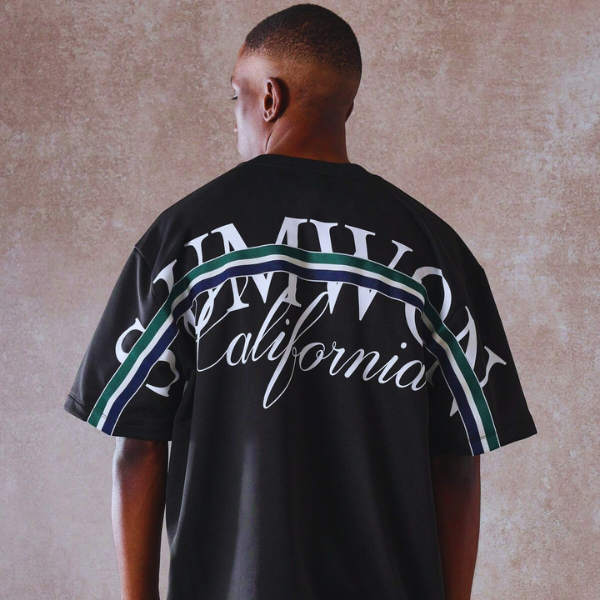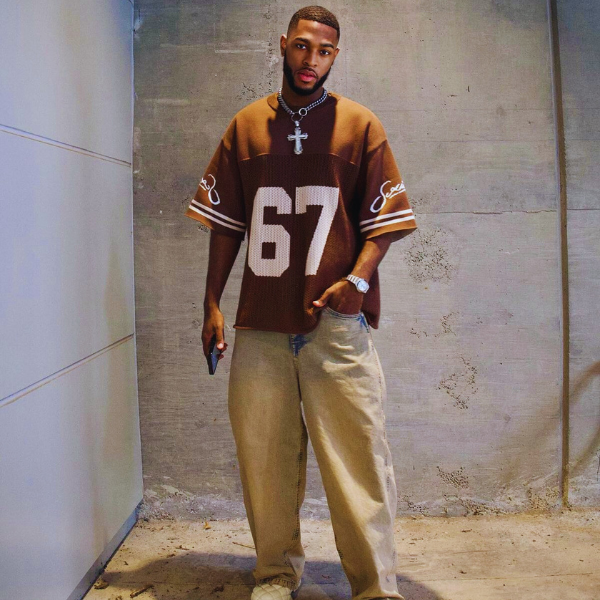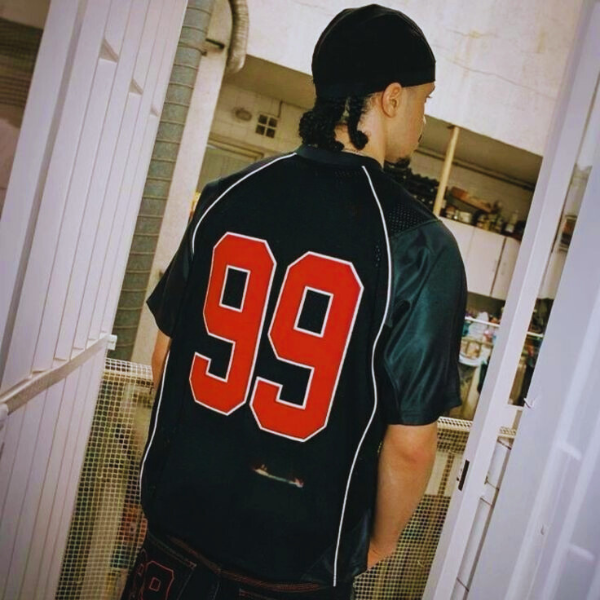In the vast and ever-evolving universe of fashion, certain materials transcend fleeting trends and seasonal reinvention to become timeless staples in both casual and haute couture wardrobes. Among these enduring fabrics, jersey holds a unique and influential place. Once a humble, utilitarian knit fabric associated with underwear and athletic wear, jersey has transformed over the course of the twentieth and twenty-first centuries into one of the most dynamic and versatile textiles in the modern fashion industry. With a lineage that traces back to the Channel Islands and a presence that now dominates runways, streetwear, and everyday essentials, jersey fashion is a case study in adaptability, aesthetic evolution, and cultural significance.
The origins of jersey are rooted in practicality. It was first manufactured on the island of Jersey, a British Crown Dependency nestled between the coasts of England and France. Traditionally, jersey fabric was crafted from wool and employed primarily in the production of fishermen’s garments and underclothing. Its defining characteristics included stretch, softness, durability, and warmth—qualities that made it particularly suited for physical labor and harsh environments. For centuries, jersey remained confined to the domain of function rather than fashion, associated more with necessity than with beauty or style.
This perception began to shift dramatically in the early twentieth century with the intervention of Gabrielle “Coco” Chanel, whose revolutionary approach to womenswear redefined fashion norms. Chanel challenged the conventions of her time by introducing garments made of jersey fabric into the female wardrobe, most notably in her day dresses and blouses. At a time when women’s clothing was stiff, corseted, and ornamentally restrictive, Chanel’s jersey designs offered liberation—clothes that moved with the body rather than against it. The use of jersey was not only a stylistic innovation but a philosophical one, symbolizing freedom, practicality, and modern femininity. From that moment, jersey was no longer just a fabric of the working class or athletic field; it had been elevated to the realm of fashion artistry.
The characteristics that once served fishermen and factory workers—its stretch, breathability, and ease of movement—would go on to become the very features that fashion designers sought to harness in the age of mobility, urban living, and fast-paced lifestyles. Jersey’s appeal lies not in its opulence, but in its democratic nature. It drapes fluidly over the body, accommodates a wide range of body types, and adapts seamlessly to both minimalist and maximalist design aesthetics. It is at once comfortable and elegant, understated and bold, pliable yet structured when necessary. These dualities have allowed it to maintain a constant presence across fashion’s many revolutions, from the rebellious youth cultures of the 1960s to the athleisure boom of the 2010s and beyond.
Today, jersey is used in an extraordinarily wide range of garments. From the ubiquitous T-shirt and the sleek midi dress to avant-garde fashion showpieces and couture eveningwear, its presence is ubiquitous yet rarely acknowledged for its complexity. Designers such as Rick Owens, Helmut Lang, and Yohji Yamamoto have frequently used jersey to explore the intersections between form and function, often utilizing the fabric’s fluidity to craft sculptural, draped silhouettes that blur the line between body and garment. At the same time, global fashion conglomerates produce jersey garments en masse for everyday use, making it one of the most accessible and relatable fabrics in the world.
However, jersey’s story is not solely one of material evolution; it is deeply intertwined with cultural expression, particularly in the context of sports and street fashion. The term “jersey” has become synonymous with athletic uniforms, particularly in team sports such as basketball, football, soccer, and baseball. In these contexts, the jersey is not merely a piece of functional apparel but a powerful symbol of identity, loyalty, and community. Fans wear jerseys to demonstrate allegiance, players wear them to embody team spirit, and entire subcultures have emerged around their aesthetic significance. The personalization of sports jerseys—with player names, numbers, and insignias—turns each garment into a representation of shared passion and individual pride.
The cultural crossover of the sports jersey into mainstream and luxury fashion is a phenomenon that began in earnest during the late twentieth century, particularly within the context of hip-hop culture. Artists like Tupac Shakur, Jay-Z, and Aaliyah incorporated oversized jerseys into their iconic looks, making them emblematic of a broader movement that fused athletic style with urban identity. The jersey became a canvas for personal expression, often styled with bold accessories, sneakers, and caps to create a visual language of power, rebellion, and cool. As hip-hop’s influence on global fashion grew, the jersey aesthetic spread across continents and demographics, prompting luxury brands to reinterpret and remix it in unexpected ways.
The twenty-first century has witnessed a further evolution of jersey fashion through the rise of athleisure, a style trend that merges athletic wear with everyday apparel. In this context, jersey has become the foundational fabric for leggings, joggers, hoodies, and sports bras, offering wearers not just comfort but an active, health-conscious identity. The emphasis on well-being, mindfulness, and mobility in contemporary life has only reinforced jersey’s relevance. Brands like Lululemon, Nike, Adidas, and Gymshark have built empires on the ability of jersey garments to perform functionally while still satisfying aesthetic sensibilities. At the same time, luxury houses like Balenciaga, Gucci, and Off-White have embraced jersey in their collections, not as a compromise on glamour but as an extension of modern luxury defined by ease, flexibility, and subtle rebellion.
Jersey’s versatility also makes it a crucial material in inclusive and adaptive fashion. Because it stretches without constraint and molds gently to the body, it is particularly well-suited for individuals with disabilities, those with sensory sensitivities, and people who do not conform to traditional size categories. In the growing movement toward size-inclusive and gender-fluid fashion, jersey offers a fabric solution that respects the individuality of the wearer. Adaptive fashion lines from brands such as Tommy Hilfiger and Universal Standard have integrated jersey into their collections, proving its ability to serve not just aesthetic desires but human needs.
In the age of sustainability, the conversation around jersey fabric has taken on new dimensions. As fast fashion has come under scrutiny for its environmental impact, many designers and manufacturers are rethinking the sourcing and lifecycle of jersey garments. Organic cotton jersey, bamboo jersey, and recycled polyester jersey are now widely available, providing environmentally conscious alternatives to traditional blends. Innovations in eco-dyeing techniques, water conservation, and ethical labor practices have become integral to the future of jersey production. Simultaneously, the concept of slow fashion—focused on durability, timelessness, and quality—is reinforcing jersey’s place as a long-lasting wardrobe essential, capable of enduring the test of time and trend cycles.
Technological advancements have further expanded what jersey can do. From thermoregulating smart fabrics to odor-resistant knits, jersey is being integrated with wearable tech innovations that align with the modern consumer’s desire for functional luxury. Laser-cutting and 3D printing techniques have introduced new textural and structural possibilities, allowing for complex garment constructions without sacrificing comfort. These innovations challenge outdated notions of jersey as “basic” or “simple,” positioning it instead as a high-performance fabric that meets the multifaceted demands of contemporary life.
Social media, particularly platforms like Instagram, TikTok, and Pinterest, has elevated jersey fashion to a new level of cultural ubiquity. Influencers and everyday users alike showcase how jersey garments can be styled for various occasions, from elevated streetwear looks to cozy loungewear ensembles. This democratization of fashion expression is particularly suited to jersey, as it allows people from all walks of life to engage with style without the need for elaborate wardrobes or inaccessible price tags. The visual culture of the digital age—where aesthetics, personality, and branding intersect—has created an ideal landscape for jersey’s continued relevance.
Despite its popularity, the challenge moving forward lies in preserving jersey’s integrity while innovating ethically and creatively. The industry must balance the convenience and affordability of jersey garments with sustainable practices and thoughtful design. Encouraging repair, reuse, and recycling of jersey pieces will be key to ensuring their place in a circular economy. At the same time, celebrating the artistry and history behind jersey can elevate it from a default choice to a deliberate one, appreciated for its complexity and cultural depth.
Jersey fashion is far more than a trend or a category; it is a language spoken across generations, cultures, and contexts. From Chanel’s liberation of women’s wear to the expression of team pride in a stadium, from the street style of New York and Tokyo to the sustainable wardrobes of the future, jersey continues to be woven into the very fabric of how we dress, move, and define ourselves. It is a fabric that adapts without erasing its origins, evolves without losing its essence, and endures precisely because of its ability to reflect the changing face of fashion itself. In every sense, jersey is not just a textile—it is a legacy.



